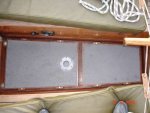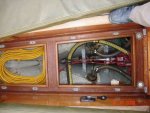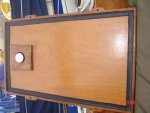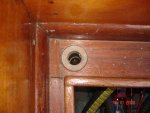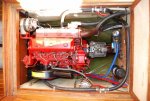Robert Wilson
Well-known member
Is it practical/completely bonkers to install a hatch in the cockpit floor to get at the engine beneath?
It would need cross-bracing to give strength and rigidity to the hatch itself, but would it damage/weaken the integrity of the boat*.
Any suggestions as to bracing to maintain full integrity?
Ideally the hatch opening would be as large as possible to give best access, but even a couple of feet square would greatly help repairs and maintenance
CO8's thread re "Sourcing white GRP sheet etc" got me thinking.
* Boat is 9m/5.5 tonnes Javelin30, built 1970's by Marcon - like a battleship
It would need cross-bracing to give strength and rigidity to the hatch itself, but would it damage/weaken the integrity of the boat*.
Any suggestions as to bracing to maintain full integrity?
Ideally the hatch opening would be as large as possible to give best access, but even a couple of feet square would greatly help repairs and maintenance
CO8's thread re "Sourcing white GRP sheet etc" got me thinking.
* Boat is 9m/5.5 tonnes Javelin30, built 1970's by Marcon - like a battleship






